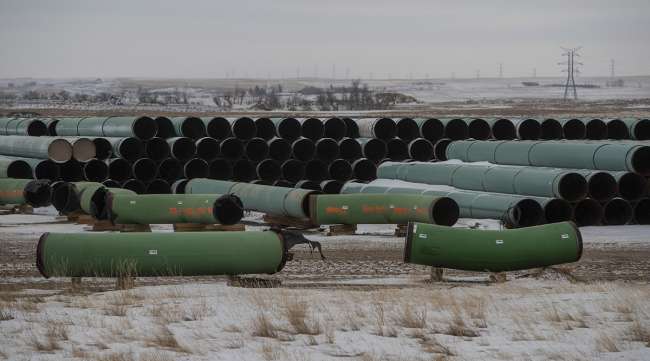Keystone Oil Spill Probe Seen Cutting Back Pipeline Flows

[Stay on top of transportation news: Get TTNews in your inbox.]
A U.S. probe into the 13,000-barrel oil spill on TC Energy’s Keystone pipeline is expected to cut into crude flows ahead of the summer driving season.
Regulators on March 7 ordered the company to reduce operating pressure along the entire Keystone system stretching from Hardisty, Canada, to Cushing, Okla., until further notice.
The new restrictions will likely force the pipeline to curb flows, according to Richard B. Kuprewicz, president for Accufacts Inc., a pipeline regulatory advisor. TC Energy said in a statement while it expects to meet its contractual obligations to deliver oil, it won’t be able to accommodate spot shipments, which typically make up about 6% of flows. It wasn’t immediately clear how or if flows on the connecting Marketlink pipeline would be affected.
The new order steps up operating restrictions imposed on the pipeline following a 13,000-barrel oil spill in Kansas in December. Keystone had recently returned operating rates to pre-shutdown levels, with flows averaging 594,000 daily barrels so far in March, according to Genscape data seen by Bloomberg.

Steve Slesinsk of Dana and Trent Broberg of Acertu pop the EV hood and reveal new, easier ways to repair, prepare and invest in electric trucks. Hear the program above and at RoadSigns.TTNews.com.
The pipeline, which can move as much as 640,000 barrels a day of heavy Canadian crude to the Gulf Coast, now faces a reduction in supplies just as U.S. refiners are ramping up ahead of summer, when yearly gasoline demand tends to peak. The pipeline’s multiweek shutdown in December roiled markets, forcing refiners to scramble to make up the lost barrels.
Prior to the spill, U.S. regulators had allowed Keystone to operate at a higher pressure than other pipelines. The Pipeline and Hazardous Materials Safety Administration on March 7 said more corrective action was needed to address the pipeline’s “repetitious pattern of failures” and the “increasing severity of spills.”
Keystone has been one of the leakiest crude pipelines in the U.S. since 2010, spilling more than 25,000 barrels, with many of those attributed to construction deficiencies, according to government data.
— With assistance from Ari Natter.
Want more news? Listen to today's daily briefing below or go here for more info:

